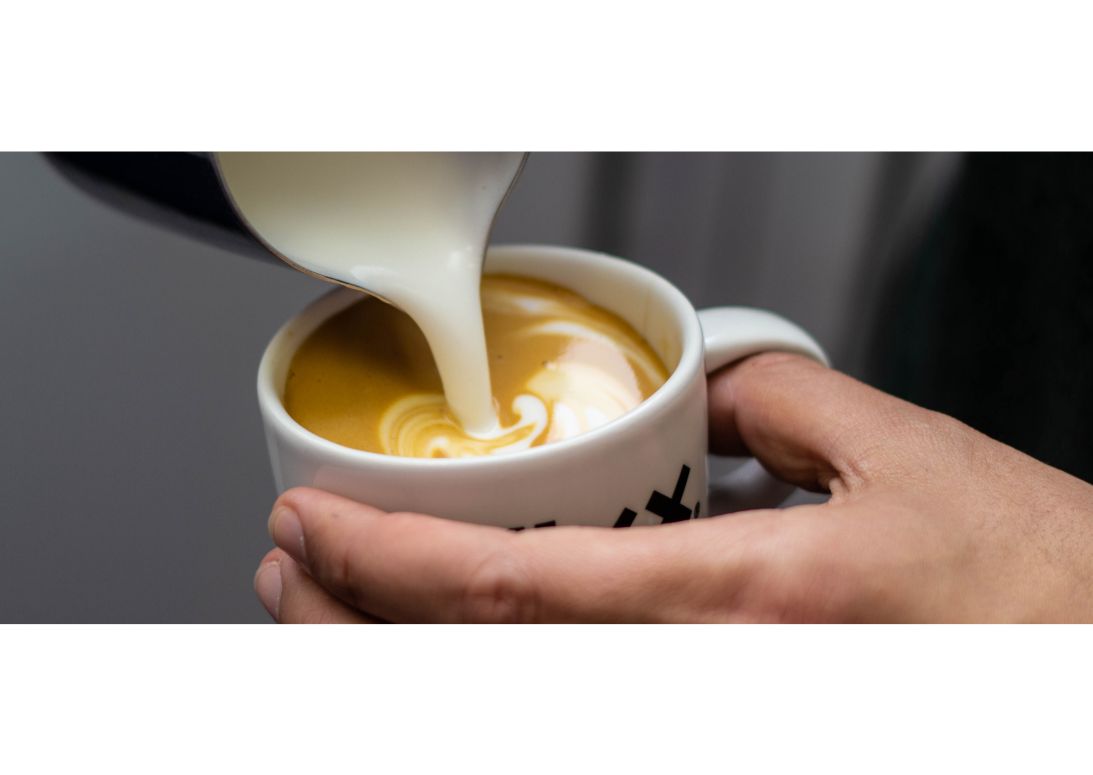Latte
What is a Latte?
A Café Latte, commonly referred to as a Latte, is a popular espresso-based coffee beverage. The word "latte" means "milk" in Italian, and the drink is named for its primary ingredients: espresso and steamed milk. Lattes are known for their balanced flavour, with the richness of the espresso complemented by the creamy, slightly sweet, and smooth texture of steamed milk.
The presence of milk make Lattes less intense and more approachable than a straight espresso. They are often enjoyed with various flavourings, such as syrups (e.g., vanilla or caramel), or served iced as an Iced Latte during warm weather. Lattes are a popular choice in coffee shops. They can be customized to suit individual preferences, making them a versatile and widely-loved coffee option.
What are the different types of Lattes?
As mentioned earlier, Latte literally translates to milk in Italian. Therefore, it's common to see it attached to many different types of drinks on a cafe menu. And the coffee-based drink is often called a Cafe Latte, meaning milky coffee. Here are some other kinds of lattes you might find on a cafe menu:
Café Latte (Latte)
The classic Latte made with espresso and steamed milk. It has a balanced coffee-to-milk ratio and is often served in a glass or cup.
Iced Latte
A traditional latte served over ice. It's a refreshing option for warm weather and can be sweetened with syrups if desired.
Vanilla/Caramel/Hazelnut Latte
These lattes include a shot of espresso, steamed milk, and a splash of syrup for a subtle, sweet flavour. These three flavours are staple offerings in most cafes, but others do exist.
Chai Latte
Instead of coffee, a chai latte is made with a tea, spice mix (chai), and steamed milk, creating a comforting and spiced drink. Some cafes will use chai syrup instead of tea.
Matcha Latte
This Latte features matcha green tea powder mixed with steamed milk for a vibrant green colour and a slightly earthy, vegetal flavour.
Turmeric Latte
Made with a blend of turmeric, spices, and steamed milk, this Latte is known for its bright golden hue and health-promoting properties.
Pumpkin Spice Latte
This has become an Autumnal staple in many cafes. It is commonly made using coffee, pumpkin spice syrup and milk and then dusted with cinnamon. Some places will top it with whipped cream, too.
Soy Latte/Oat Milk Latte
These are just dairy-free alternatives to your standard Latte. Many other options exist, like almond or rice milk, to name just a few. These kinds of milk offer the same creamy experience as the Latte minus the lactose.
These are just a few examples of the many latte variations you can find in coffee shops and make at home. You can also create unique latte combinations by experimenting with different syrups, spices, and flavourings to suit your tastes.
What are the origins of the Latte?
Even though the Caffè Latte/Latte has an Italian name, its origins are outside Italy. The reason a lot of coffees worldwide have Italian names is probably the same reason a lot of bars have Irish names. It's what we're good at! The Caffè Latte/Latte probably evolved along the same lines as the café au lait and café con leche of France and Spain. And they all mean the same thing: coffee and/with milk. Initially, these coffees would have been an equal part coffee to milk ratio (1:1) for dipping some delicious pastry into for breakfast.
But over time, the Latte part of the drink came to the forefront, making it much milkier (1:5-1:6). This made it a naturally sweeter drink, appealing to those who liked such things. In turn, the drink became suitable for pairing with different flavours. This was especially true in Seattle during the 90s coffee boom, thanks to Starbucks. Vanilla, caramel, and hazelnut flavourings were commonly added to lattes, and this trend continues globally. The Latte is also a popular drink for baristas to flex their latte art skills.
What is Latte Art?
Latte art is the creative and skilled practice of transforming a simple cup of coffee into a visually appealing delight. The process involves delicately pouring steamed milk into an espresso shot to create intricate designs in the espresso's crema. The designs can be simple or incredibly elaborate in form, each requiring precision in milk frothing and pouring. Common designs include hearts, ferns, tulips and rosettes. The artistry enhances the aesthetic appeal of a latte and reflects the barista's expertise and dedication to the craft. Latte art has become a hallmark of speciality coffee culture, celebrated for the beauty it adds to the coffee-drinking experience.





